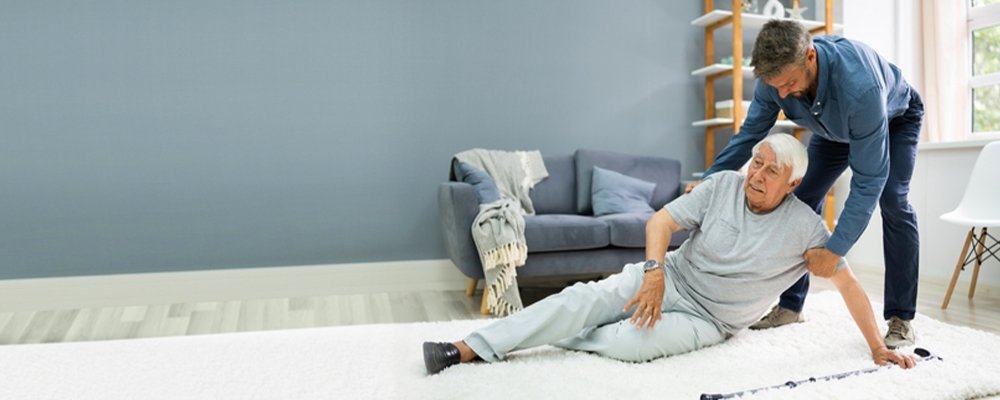We can often stop ourselves landing on the floor when we slip or trip, by grabbing hold of something to break the fall.
However, sometimes we can make it worse if the object we are holding onto is not stable. For example, slipping on a wet floor and grabbing a kitchen chair may bring the chair down on top of us.
Falls are a common, but often overlooked, cause of injury.
Around 1 in 3 adults over 65 who live at home will have at least one fall a year, and about half of these will have more frequent falls.
Slips, trips and falls can happen anywhere, at anytime and in any workplace.
As a result you, your colleagues, the people you support and any visitors are exposed to the risks.
The Health and Safety at Work Act 1974
Requires employers to ensure the health, safety and wellbeing of all employees and anyone affected by their work, so far as is reasonably practicable.
This means balancing the level of risk against the measures needed to control the risk in terms of money, time or trouble. This includes taking steps to control slips, trips and falls risks.
Older people living in care homes are three times more likely to fall than older people living in the community.
25% of older people who fall in care homes suffer serious injuries.
These are some simple practices you can follow to help prevent accidents:
Clean up any spillages promptly and use appropriate signage to warn others of wet floors.
Take your time, don’t rush. Many accidents occur when people are trying to do things quickly, neglecting their safety.
Most of us have a favourite pair of shoes or slippers, but if they are worn out, ill-fitting or an impractical style, they can be a serious fall hazard.
Supportive, low-heeled shoes with non-slip soles are ideal. Encourage people to wear them both inside and outside the home. Avoid walking around in socks, stockings or backless slippers.
Risk assessments are really important for health and safety management.
They are carried out so that you can comply with your statutory duty under the Health and Safety at Work Act 1974 and other associated regulations. Risk assessments work by reducing the level of incidents and accidents.
Doing regular strength and balance exercises will improve strength and balance and reduce the falls risk.
This can take the form of simple activities such as walking and dancing, or specialist training programmes. Many community centres and local gyms offer specialist training programmes for older people. Exercises that can be carried out at home are also available. GP’s and Falls Teams will know about training programmes in your area.
Falls do cause death or disability directly. But most falls are minor and do not end in serious injury or mortality.
The long term psychological impact can be a challenge because many people develop a fear of falling. This lack of confidence can lead to reduced mobility and some people may even avoid everyday activities like cooking, cleaning, shopping or any outdoor activities.
Is the person who has fallen…
Clear of danger?
Are they responsive?
Are their airways open?
Is their breathing adequate?
Do they have a pulse?
If NO call 999 and commence emergency first aid.
Keep the person calm, still and comfortable.
You need to follow your employer’s agreed processes to monitor falls risks and support.
The level of monitoring, recording and reporting will depend on the individual and their personal circumstances.





